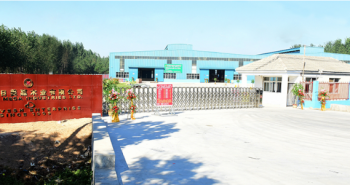Xuzhou Mega Full Birch Plywood production process
1. Forest harvesting
Birch is the raw material used in the production of plywood.
More than 80% of production is supplied by the Xuzhou Mega Group’s own resource base.
2. Hydrothermal treatment of timber
Before peeling by direct immersion in hot water, this process is used in the plywood industry for processing logs to increase the plastic properties of timber and create conditions for achieving a high-quality veneer.
Hydrothermal treatment of raw material for plywood is carried out in soft modes at a pool water temperature of 40 to 45°C.
3. Feedstock debarking
Debarking is used to remove bark and abrasive particles (sand) from the surface of timber.
Debarking allows a better veneer to be achieved and reduces the wear on the peeling knife.
Debarking is most often performed on rotary machines.
4. Cutting feedstock into bolts
Cutting of the feedstock begins with the determination of the cutting line, taking into account the production of the maximum number of top-quality bolts with the minimum loss of timber.
The butt end and top of the log are cross-cut as they usually have an oblique cut, and defective areas are cut out (rot, large knots).
Swing saws with a diameter of 2,000 mm are used for cutting logs.
5. Veneer peeling
Peeling is a process in which a continuous strip of wood, that is, a veneer, is removed from a rotating bolt with a gradually moving knife. The quality of plywood laminated from veneer and the consumption of adhesive materials depend on the quality of the veneer.
6. Veneer drying
Drying is the process of removing moisture from the veneer located in the cavities and in the walls of its cells until the design-specified humidity of the veneer is reached.
The drying line consists of hot zones 1 and 2 and a cooling zone.
7. Veneer patching
The quality of the plywood is determined by the quality of the outer plies. Knots are the primary grade defects. More than 50% of birch veneer plies contain knots. The best way to eliminate defects and improve the grade of veneer is to cut them out and replace them with inserts made of high-quality veneer.
8. Pressing
The purpose of pre-pressing is to produce a formed stack in which the veneer plies stick together; as a result, the stacks acquire¬ the necessary rigidity and transportability. This contributes to defect-free loading of stacks into the hot press and prevents the shift of veneer plies¬ during the loading process.
A pile of pre-pressed plywood stacks enters the lifting table, the closing of the press plates is initiated, and the process of pressing the plywood begins.
9. Cutting and sanding of plywood
The plywood sheets are cut from four sides to the size that meets the requirements of the product standards. Plywood sheets are to be cut at a right angle, and the cut should be clean with no breaks or fringes. The flaw detection unit is used to detect any concealed non-laminated areas in the plywood sheets.
A wide-belt sanding machine is used for double-sided processing of plywood, levelling out its thickness and creating a high-quality surface on the sheets.
10. Lamination and painting of the ends
The plywood passes through the sealed packaging station where the sealed packaging is applied on both sides of the sheet. Then, the sealed packaging is automatically cut using rotary scissors.
The Painting chamber is used for painting the ends of laminated plywood, which protects its ends from moisture.
11. Stockpiling
12. Packaging and labeling of plywood

